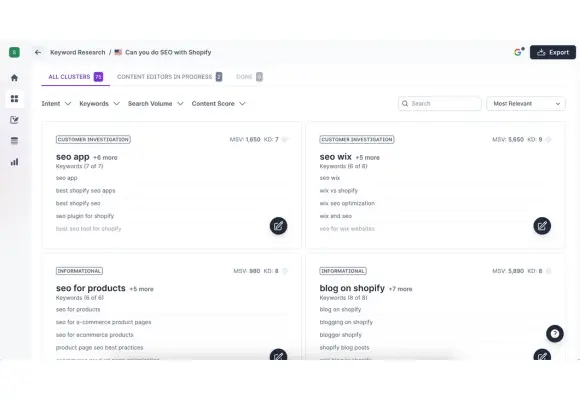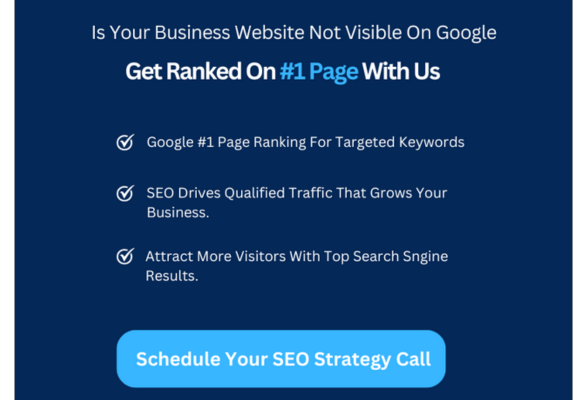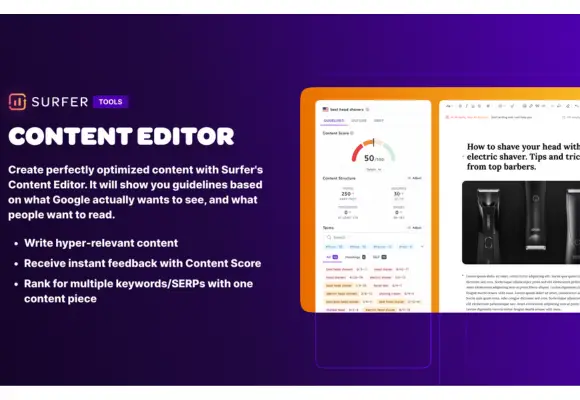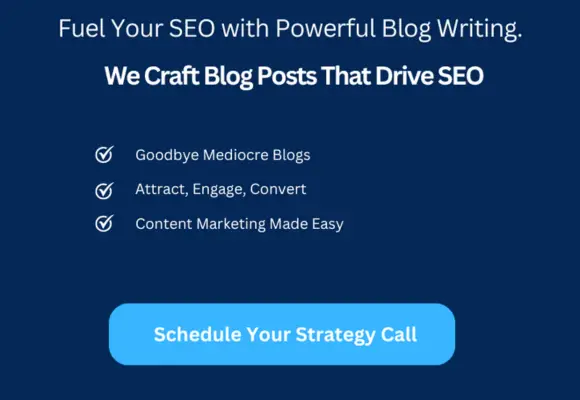Key Highlights
- Shopify handles some basic SEO best practices out of the box, but additional optimization is necessary to take your store to the top of Google.
- Technical SEO is critical for e-commerce success, and Shopify handles it reasonably well. However, there are a few considerations worth attention, such as setting your preferred domain and creating a logical store structure.
- Keyword research is essential for optimizing your Shopify store. You can improve your search engine rankings by mapping relevant keywords to your store URLs.
- On-page SEO elements like optimizing meta titles and descriptions, writing unique product and category descriptions, and adding schema markup can improve your store’s visibility in search results.
- Content marketing, including blogging and video content, can drive organic traffic to your store and improve your SEO.
- Link building is crucial for boosting your store’s search engine rankings. Strategies like finding sites linking to your competitors and writing guest posts can help you acquire quality backlinks.
- The beginner’s guide to Shopify SEO provides a step-by-step process for setting up your store’s SEO foundation, conducting keyword research, implementing on-page SEO best practices, and starting your first link-building campaign.
Shopify is one of the leading e-commerce platforms, empowering countless entrepreneurs to launch their online stores. However, more than simply having a store is required to succeed in today’s competitive market. Optimizing your store for search engines is crucial to driving more traffic and sales to your store. This process is known as search engine optimization (SEO).
While Shopify handles some basic SEO best practices out of the box, more is needed to take your store to the top of Google. To truly succeed, you need to optimize for all facets of SEO. In this beginner’s guide to Shopify SEO, we will walk you through the step-by-step process of optimizing your store for search engines. From technical SEO to keyword research, on-page optimization, content marketing, and link building, we will cover all the essential strategies to help you improve your store’s visibility and drive organic traffic.
Following the strategies outlined in this guide can increase your store’s organic search visibility, attract potential customers, and ultimately boost your sales. So, let’s dive in and learn how to optimize your Shopify store for SEO success.
Launch your dream store and unlock SEO power for just $1! Start your free Shopify trial today ►► https://www.shopify.com/free-trial
Understanding Shopify SEO
Before we delve into optimizing your Shopify store for SEO, let’s first understand what SEO is and how it applies to your online store. SEO, or search engine optimization, improves your website’s visibility in search engine results. When potential customers search for products or services related to your Shopify store, you want your store to appear at the top of the search results.
Shopify SEO refers to optimizing your store to improve its search engine rankings. By implementing SEO strategies, you can increase your store’s organic traffic, attract potential customers, and drive more sales.
The importance of SEO for your Shopify store
It’s crucial to understand the significance of SEO for your Shopify store. There’s no overstating the importance of optimizing your store for search engines. SEO helps increase organic traffic to your store, which refers to the visitors who find your site through search engine results rather than paid advertisements.
By optimizing your store for SEO, you can attract potential customers who are actively searching for products or services related to what you offer. When your website receives traffic through search engine optimization (SEO), the visitors are more likely to make a purchase, which means that the traffic you receive from SEO has a higher potential to convert into sales.
Furthermore, appearing higher in search results increases your store’s visibility and credibility. When your store appears on the first page of search engine results, it signals to potential customers that your business is trustworthy and reputable.
Unlock the power of SEO and AI content generation! Start your free 7-day Surfer SEO trial today, one of the market’s best tools for dominating Shopify SEO ►► https://get.surferseo.com/ShopifySEOGuide
How SEO differs for Shopify sites
SEO for Shopify sites differs from other types of websites in several ways. One key difference is the site structure.
Shopify stores have a unique site structure, including a homepage, category pages (collections in Shopify), subcategory pages, and individual product pages. This structure is designed for e-commerce sites and aims to provide a seamless user experience.
Additionally, Shopify stores often have many product pages, which requires careful optimization to ensure search engines properly index each page.
User experience is another important aspect of SEO for Shopify sites. Shopify provides themes and templates optimized for mobile devices, ensuring your store looks great and functions well on smartphones and tablets. It is crucial to note that Google considers mobile-friendliness when ranking websites. Optimizing a website for mobile devices can positively impact its ranking on Google’s search engine.
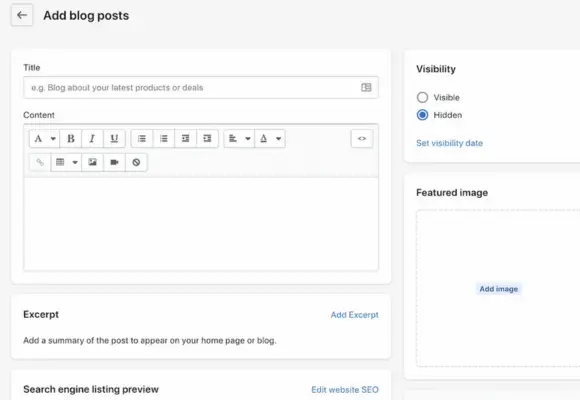
Preparing Your Shopify Store for SEO
Several essential steps are needed to prepare your Shopify store for SEO success. You should optimize your store’s settings and ensure that search engines like Google properly index it.
Firstly, setting up your store with a search engine-friendly domain and preferred URL structure is important. You can do this in the Shopify settings, where you can choose your preferred domain and set up redirects for alternative URLs.
Secondly, you should verify your store with search engines like Google using Google Search Console. This feature allows you to track your store’s performance in search results, identify any technical issues that require attention, and submit your sitemap for indexing.
Lastly, you should configure essential SEO settings within Shopify. These settings include customizing your page titles, meta descriptions, and alt text for images. By optimizing these settings, you can improve your store’s visibility in search results and attract more organic traffic.

Essential SEO settings in Shopify
Optimizing your Shopify store for SEO involves configuring essential settings within the platform. These settings help improve your store’s visibility in search engine results and attract organic traffic.
One important setting is customizing your page titles. Page titles should accurately describe the page’s content and include relevant keywords. Including relevant and descriptive meta tags in a web page’s HTML helps search engines comprehend the page’s topic and assign it a suitable ranking in search results.
Another essential setting is the meta description. Meta descriptions are short snippets of text that appear below the page title in search results. They provide a summary of the page’s content and can influence the click-through rate of search engine users. Writing compelling meta descriptions is important to entice users to click on your store’s link.
Alt text is another crucial SEO setting in Shopify. It describes images on your store’s website. Search engines rely on alt text to understand the content of images, and it also helps improve accessibility for visually impaired users. When optimizing alt text, be descriptive and use relevant keywords when appropriate.
Master your Shopify SEO with a free SEMrush trial! Go beyond basic settings and unlock powerful tools for keyword research, competitor analysis, and more ►► https://www.semrush.com/lp/success-make-business-visible-aff/en/
Verifying your store with search engines
Verifying your Shopify store with search engines, such as Google, is an important step in optimizing your store for SEO.
Google Search Console is a free tool provided by Google that allows you to monitor and maintain your store’s presence in Google search results. By verifying your store with Google Search Console, you gain access to valuable insights, such as the keywords that drive organic traffic to your store, any crawling issues, and the ability to submit a sitemap for indexing.
Verifying your store with Google Search Console involves adding a unique verification code to its HTML. Follow the various methods to add an HTML file to your store’s root directory or a meta tag to its header.
Once your store is verified, you can access important data and tools within Google Search Console to help optimize your store for better search engine rankings and visibility.
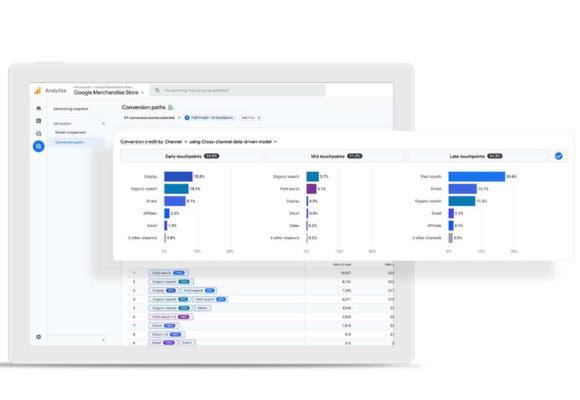
SEO Fundamentals for Shopify
SEO fundamentals are essential for optimizing your Shopify store and attracting organic traffic. These fundamentals include keyword research, understanding search intent, and using relevant keywords throughout your store’s content.
Keyword research identifies the search terms and phrases that potential customers use when looking for products or services related to your store. You can understand your target audience’s language through keyword research and optimize your store’s content.
Understanding search intent is equally important. Search intent refers to the reason behind a specific search query. By understanding the intent behind a search, you can create content that matches the searcher’s needs and preferences.
When conducting keyword research, it’s important to focus on relevant keywords that align with your store’s products or services. Using relevant keywords throughout your store’s content, including page titles, meta descriptions, and product descriptions, helps search engines understand your store’s content and rank it appropriately in search results.
Nail your Shopify SEO strategy with a free 7-day Surfer SEO trial! Their top-notch keyword research tool automates the process and helps you find the perfect keywords to attract organic traffic ►► https://get.surferseo.com/ShopifySEOGuide
Keyword research basics for Shopify
Keyword research is a crucial component of SEO for Shopify stores. It involves identifying the keywords and search queries that potential customers use when looking for products or services related to your store.
To conduct keyword research, brainstorm a list of keywords relevant to your store’s products or services. These can include specific product names, types of products, or broader keywords related to your industry.
Once you have a list of potential keywords, you can use keyword research tools like Ahrefs’ Keywords Explorer to expand your list and gather valuable data. These tools provide insights into search volume, keyword difficulty, and other metrics that help you prioritize your keyword targets.
When selecting target keywords for your store, consider each keyword’s search volume and competition. Targeting a mix of high-volume and low-competition keywords is often beneficial to increase your chances of ranking in search results.
Search queries, or long-tail keywords, are specific phrases that potential customers use when searching for products or services. These queries often indicate high purchase intent and can be valuable targets for your store’s SEO efforts.
Understanding your competition
Understanding your competition is crucial for effective Shopify SEO. By analyzing your competitors’ strategies and identifying their strengths and weaknesses, you can develop a comprehensive SEO strategy for your store.
Start by identifying your top competitors in search engine results for your target keywords. Analyze their websites and content to understand their SEO strategies, including keyword use, content structure, and backlink profiles.
While it’s important to learn from your competitors, it’s equally important to differentiate your store and offer unique value to your customers. Look for opportunities to provide better content, user experience, and customer service than your competitors.
By understanding your competition and implementing best practices based on your analysis, you can position your Shopify store for success in organic search results and gain a competitive advantage in your industry.
https://www.semrush.com/lp/product-competitive-research/en/
Technical SEO for Shopify
Technical SEO is critical to optimizing your Shopify store for search engines. It involves optimizing your store’s technical elements to improve its visibility and performance in search results.
One important element of technical SEO is site speed. A fast-loading website provides a better user experience and improves your store’s chances of ranking higher in search results. To improve site speed, optimize image sizes, minimize HTML, CSS, and JavaScript files, and use caching and content delivery networks (CDNs).
Another crucial aspect of technical SEO for Shopify is mobile optimization. To make your store mobile-friendly, you must optimize it for mobile users increasingly using mobile devices for online shopping. Use responsive design to ensure that your store looks and functions well on mobile devices, and consider implementing features such as mobile-friendly navigation and quick page load times.
In addition to site speed and mobile optimization, technical SEO for Shopify also includes:
- Optimizing your store’s site structure.
- Internal linking.
- Ensuring proper indexing by search engines.
Addressing these technical aspects can improve your store’s visibility and increase organic traffic.

Site structure and navigation optimization
Site structure and navigation optimization are crucial for Shopify SEO because they affect your store’s user experience and search engine visibility.
An optimized site structure involves organizing your store’s content logically and hierarchically. Using categories (collections in Shopify) and subcategories can help you guide users and search engines to easily navigate and understand your store’s different sections and pages. Doing so will create a clear structure that directs users to relevant products.
Internal linking is another important aspect of site structure and navigation optimization. Linking relevant pages within your store improves the user experience and helps search engines understand the relationships between pages. Use keyword-rich anchor text in your internal links to provide additional context to search engines.
Optimizing your site’s navigation includes creating clear and intuitive menus that make it easy for users to find what they want. Use descriptive labels for menu items, and consider using breadcrumbs to show users their current location within your store.
By optimizing your site’s structure and navigation, you can improve user engagement, increase time spent on your site, and ultimately boost your store’s rankings in search engine results.
Personalize your checkout for free! Try Checkout Extensions Plus with a 7-day trial and unlock conversion-boosting features like custom fields and banners ►► https://platform.shoffi.app/r/rl_B0uBWoHp
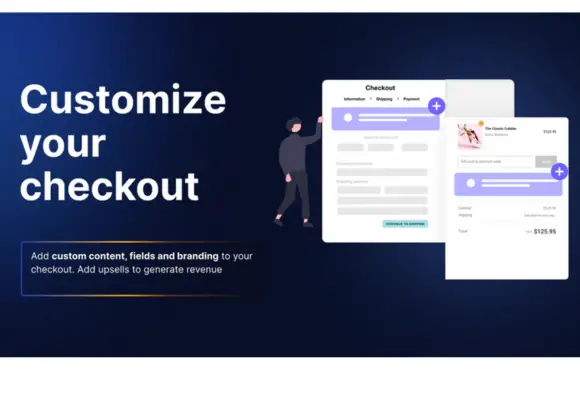
Mobile optimization for a better user experience
Optimizing your website for mobile devices has become crucial for effective Shopify SEO due to the growing trend of online shopping through mobile devices. Optimizing your store for mobile devices will provide a better user experience and improve your store’s rankings in search results.
One key aspect of mobile optimization is responsive design. Responsive design ensures that your store’s layout and content adapt to different screen sizes and resolutions. Smartphones, tablets, and other mobile devices will easily navigate and display your store in a great way.
Page speed is another crucial factor in mobile optimization. Mobile users expect fast-loading websites, and Google considers page speed a ranking factor. To improve page speed on mobile devices, optimize images, minimize unnecessary code, and leverage caching and content delivery networks (CDNs).
By prioritizing mobile optimization in your Shopify store, you can provide a better user experience, increase mobile conversions, and improve your store’s visibility in mobile search results.
On-Page SEO Strategies
On-page SEO strategies are essential for Shopify stores to optimize individual pages and attract organic traffic. These strategies focus on optimizing elements within each page to improve its visibility and relevance in search results.
One important aspect of on-page SEO for Shopify is optimizing product pages. Each product page should have a unique title tag, meta description, and URL that accurately describes the product and includes relevant keywords. Additionally, product images should have descriptive alt text to provide additional context.
Crafting compelling product descriptions is another crucial on-page SEO strategy. Product descriptions should be unique, informative, and optimized with relevant keywords. Focus on highlighting each product’s unique features, benefits, and selling points to increase its visibility in search results.
Content marketing is also an important on-page SEO strategy for Shopify stores. Creating and optimizing blog posts and other content can attract organic traffic and engage potential customers. Focus on topics relevant to your store’s products or industry and provide valuable information your target audience seeks.
Implementing these on-page SEO strategies can improve the visibility and relevance of your Shopify store’s pages in search results, attracting more organic traffic and increasing conversions.
Master on-page SEO for your Shopify store with a free 7-day Surfer SEO trial! Surfer helps you optimize titles, descriptions, content, and more for higher rankings ►► https://get.surferseo.com/ShopifySEOGuide
Optimizing product pages
Optimizing product pages is crucial for Shopify’s on-page SEO. To improve the visibility and relevance of each product page in search results, we should optimize it.
Writing unique and compelling meta descriptions is an important aspect of optimizing product pages. Meta descriptions are short snippets of text that appear below the page title in search results. They should accurately describe the product and entice users to click on your store’s link.
Product images also play a role in on-page SEO. Each image should have descriptive alt text that includes relevant keywords. Adding descriptive alt text to your store’s images helps search engines understand the image’s content. Improving the image quality of your store’s products can enhance their visibility in image search results.
Additionally, product descriptions should be unique, informative, and optimized with relevant keywords. Highlighting each product’s distinctive features, benefits, and selling points increases its visibility in search results.
By optimizing these elements of your product pages, you can improve their visibility and relevance in search results, attracting more organic traffic and increasing conversions.
Craft high-converting product pages in minutes! Try Tapita Landing Page Builder for free and create beautiful, SEO-friendly pages ►► https://platform.shoffi.app/r/rl_luWAZs1l
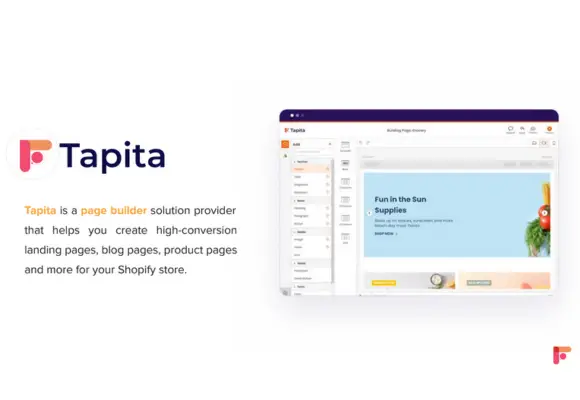
Crafting compelling product descriptions
Crafting compelling product descriptions is crucial for Shopify’s on-page SEO. Product descriptions should be unique, informative, and optimized with relevant keywords to improve their visibility in search results.
When writing product descriptions, highlight each product’s unique features, benefits, and selling points. Use descriptive language, storytelling techniques, and customer reviews to make the descriptions more engaging and persuasive.
Optimize your product descriptions with relevant keywords. Conduct keyword research to identify potential customers’ keywords to search for similar products. Incorporate these keywords into your product descriptions to improve their visibility in search results.
Avoid using duplicate or generic product descriptions. Each product should have a unique description that accurately reflects its features and benefits. Duplicate content can negatively impact your store’s SEO and may result in lower rankings in search results.
By crafting compelling and optimized product descriptions, you can improve the visibility of your products in search results, attract more organic traffic, and increase conversions.
Write high-converting product descriptions in seconds! Try StoreYa ►►https://platform.shoffi.app/r/rl_qlKAh7uM and unlock the power of AI-powered content generation.
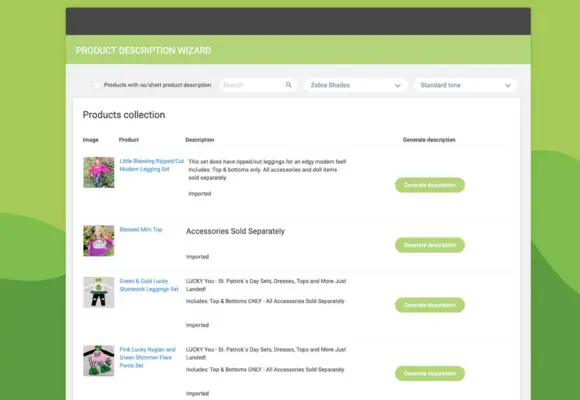
Content Marketing for Shopify Stores
Content marketing is a powerful strategy for Shopify stores to attract organic traffic, engage potential customers, and improve SEO rankings. By creating valuable and relevant content, you can establish your store as an authority in your industry and build trust with your audience.
One effective content marketing strategy for Shopify stores is blogging. Blogging allows you to create informative and engaging content that targets specific keywords and topics related to your store’s products or industry. You can attract organic traffic and increase brand visibility by addressing common questions, providing how-to guides, and offering valuable insights.
Video content is another effective content marketing strategy for Shopify stores. Videos can effectively showcase your products, provide demonstrations or tutorials, and engage your audience dynamically and interactively. By optimizing your videos with relevant keywords and sharing them on platforms like YouTube, you can increase your store’s visibility and attract more organic traffic.
By implementing a content marketing strategy that includes blogging and video content, you can attract a larger audience, improve brand awareness, and increase organic traffic to your Shopify store.
Blogging to boost your SEO
Blogging is an effective content marketing strategy for Shopify stores to boost SEO and attract organic traffic. By consistently creating valuable and informative blog content, you can increase your store’s visibility and establish your brand as an authority in your industry.
When blogging for SEO, focus on topics and keywords relevant to your store’s products or industry. Conduct keyword research to identify high-volume and low-competition keywords you can target in your blog posts.
Each blog post should provide valuable information, answer common questions, or offer insights and tips related to your target audience’s interests. Write clearly and engagingly, using headings, bullet points, and images to enhance readability.
Optimize your blog posts with relevant keywords, including them in the title, headings, and throughout the content. Including relevant keywords and phrases in your blog post helps search engines understand its topic and improves its visibility in search results.
By consistently publishing informative and optimized blog content, you can attract more organic traffic, improve your store’s SEO rankings, and establish your brand as a trusted resource in your industry.
Using video content to engage and rank
Video content is a powerful tool for engaging your audience and improving SEO rankings for your Shopify store. By incorporating video content into your content marketing strategy, you can effectively showcase your products, provide demonstrations or tutorials, and engage your audience dynamically and interactively.
Using video content to boost your SEO, create high-quality videos relevant to your store’s products or industry. Optimize your videos with appropriate keywords in the title, description, and tags to improve their visibility in search results.
Incorporate video content into your blog posts and product pages to enhance the user experience. Videos can provide additional information, demonstrate product features, and engage users more visually and interactively.
Share your videos on platforms like YouTube and optimize your channel for SEO. YouTube is the second-largest search engine after Google, and optimizing your videos for search can significantly increase their visibility and attract more organic traffic to your store.
By incorporating video content into your content marketing strategy, you can enhance the user experience, improve your store’s search engine rankings, and engage your audience more compellingly.
Link Building for Shopify Sites
Link building is an important strategy for improving SEO and increasing the visibility of your Shopify store. Acquiring high-quality backlinks from reputable websites can improve your store’s authority and rankings in search engine results.
One effective strategy for acquiring quality backlinks is finding sites linking to your competitors. Many websites that link to your competitors may also be interested in linking to your store if you offer valuable content or products. Reach out to these websites and pitch your store as a useful resource.
Another effective link-building strategy is to write guest posts for relevant websites in your industry. Guest posting allows you to showcase your expertise, provide valuable content to a new audience, and earn backlinks to your store. Look for websites that accept guest posts and pitch them relevant topics that align with their audience’s interests.
Social media can also be a valuable tool for link-building. Share your store’s content on social media platforms and engage with your audience. Promoting your content and building relationships with influencers and industry leaders can attract more backlinks and increase your store’s visibility.
Implementing effective link-building strategies can improve your store’s authority, attract more organic traffic, and increase your rankings in search engine results.
With Link Whisper, this revolutionary tool automates internal linking for higher Google rankings ►► https://linkwhisper.com/ref/2358/
Strategies for acquiring quality backlinks
Acquiring quality backlinks is crucial for Shopify SEO as it improves your store’s authority and visibility in search engine results. You can use several strategies to obtain high-quality backlinks for your store.
One effective strategy is finding websites already linking to your competitors. These websites have already shown an interest in connecting to similar content or products. Reach out to these websites and pitch your store as a valuable resource or offer guest post opportunities to earn backlinks.
Guest posting on relevant websites is another effective strategy for acquiring quality backlinks. Look for websites in your industry that accept guest posts and pitch them unique and valuable content ideas. By providing high-quality content to these websites, you can earn backlinks to your store and increase its visibility.
Engaging with influencers and industry leaders on social media can also help you acquire quality backlinks. Promoting your content and building relationships with influencers can attract attention and earn backlinks from their websites or social media profiles.
These link-building strategies can help you acquire high-quality backlinks, improve your store’s authority, and increase its visibility in search engine results.
Build high-quality backlinks naturally with Authority Builders (my trusted partner) and watch your Shopify store climb search engine rankings ►► Application Page: https://authority.builders/apply/d6pc984369
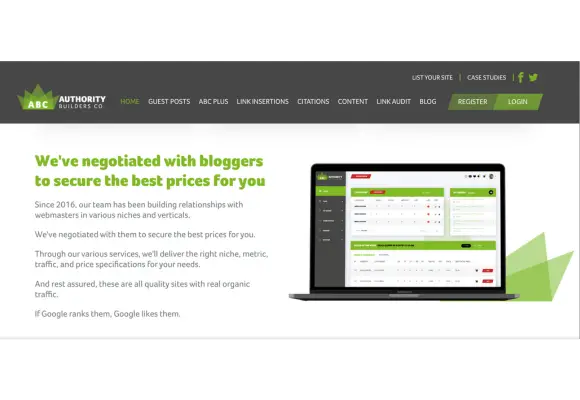
Leveraging social media for SEO
Social media can play a significant role in your Shopify SEO strategy by increasing your store’s visibility, driving traffic to your website, and improving your search engine rankings.
To leverage social media for SEO, start by creating and optimizing profiles on relevant social media platforms. Use your store’s branding, keywords, and a clear description to optimize your profiles and make it easy for users to find and engage with your store.
Share your store’s content on social media platforms to increase its visibility and drive traffic to your website. Include links to your store’s pages and encourage users to visit and explore your website.
Engage with your audience on social media by responding to comments, answering questions, and providing valuable content. Building relationships with your audience increases the likelihood of them sharing your content and linking to your store.
Social media signals, such as likes, shares, and comments, can indirectly impact your search engine rankings. When your content is widely shared and engaged with on social media, it indicates to search engines that it is valuable and relevant, potentially improving your store’s rankings in search results.
By leveraging social media as part of your SEO strategy, you can increase your store’s visibility, drive more organic traffic, and improve its search engine rankings.
Beginner’s Guide to Shopify SEO
It can initially seem overwhelming if you’re new to Shopify and SEO. However, with a step-by-step approach, you can optimize your store for SEO and increase its visibility in search engine results.
To get started with Shopify SEO, you’ll need a few things. Firstly, set up Google Analytics to monitor your store’s performance and track important metrics like website traffic, user behavior, and conversions. Analyzing the data obtained from your SEO efforts will provide valuable insights into their effectiveness.
Next, familiarize yourself with the Shopify app store and identify SEO tools that can help you optimize your store. These tools can provide valuable insights, keyword research data, and recommendations for improving your store’s SEO.
The first step in your Shopify SEO journey is to set up your store’s SEO foundation. To ensure better search engine optimization, it is important to complete an SEO checklist that includes essential settings like domain preference, sitemap submission, and mobile optimization.
The second step is to conduct keyword research to identify potential customers’ keywords to search for similar products or services. Use keyword research tools to gather search volume, competition, and relevance data and optimize your store’s content accordingly.
The third step is implementing on-page SEO best practices, including optimizing page titles, meta descriptions, and content structure. These best practices can improve your store’s visibility and relevance in search results.
The fourth step is to start your first link-building campaign. Acquiring high-quality backlinks from reputable websites can improve your store’s authority and visibility in search engine results. Strategies like guest posting and leveraging social media can help you acquire these backlinks.
By following these steps and implementing effective SEO strategies, you can optimize your Shopify store for SEO and increase its visibility, organic traffic, and sales.
What you’ll need to get started
Getting started with Shopify SEO requires a few essential tools and resources. These include Google Analytics, the Shopify app store, and an SEO tool.
Google Analytics is a free tool provided by Google that allows you to track and analyze important metrics for your Shopify store. You can monitor website traffic, user behavior, conversion rates, and other key performance indicators by installing Google Analytics. This data is crucial for understanding the effectiveness of your SEO efforts and making data-driven decisions.
The Shopify app store is a marketplace that offers various apps and tools to enhance the functionality and SEO of your Shopify store. You can find SEO tools that provide keyword research data, recommendations, and insights to help you optimize your store’s content and improve its visibility in search engine results.
An SEO tool is also essential for Shopify SEO. This tool can provide valuable data and insights to guide your SEO strategy, including keyword research, competitor analysis, and backlink analysis. Look for an SEO tool that integrates with Shopify and provides relevant features and data for optimizing your store.
With these tools and resources, you can effectively monitor and optimize your Shopify store’s SEO, improve its visibility, and attract more organic traffic.
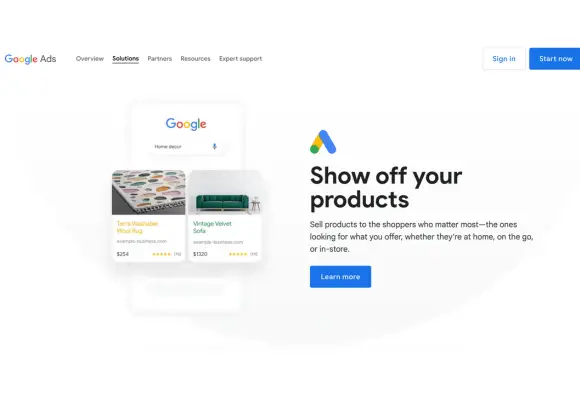
Step 1: Setting up your Shopify SEO foundation
The first step in optimizing your Shopify store for SEO is to set up its SEO foundation. To optimize your online store’s performance, you must complete an SEO checklist and properly configure your store’s site structure and essential settings.
An SEO checklist includes important tasks and settings for optimizing your store for search engines. This checklist typically includes setting up your preferred domain, submitting your sitemap, configuring your URL structure, and optimizing mobile responsiveness.
Site structure is an important aspect of your store’s SEO foundation. A well-organized site structure makes it easier for search engines to crawl and index your store’s pages. This includes:
- Properly categorizing your products.
- Creating logical navigation menus.
- Using internal linking to guide users and search engines through your store.
Essential SEO settings in Shopify include customizing your page titles, meta descriptions, and alt text for images. These settings help search engines understand the content and relevance of your pages, improving their visibility in search results. It’s important to optimize these settings using relevant keywords and compelling descriptions.
By setting up your store’s SEO foundation and completing the necessary checklist items, you can ensure your store is properly optimized for search engines and increase its visibility and organic traffic.
https://get.stamped.io/ShopifySEOGuide

Step 2: Conducting keyword research
The second step in Shopify SEO is conducting keyword research. Keyword research helps you understand potential customers’ search terms and phrases when looking for products or services related to your store.
To conduct keyword research, brainstorm a list of keywords relevant to your store’s products or industry. These can include specific product names, types of products, or broader keywords related to your industry.
Once you have a list of potential keywords, use keyword research tools to gather search volume, competition, and relevance data. These tools can help you prioritize your keyword targets and provide insights into how often people search for specific keywords, how difficult it is to rank for them, and other valuable metrics.
When selecting target keywords for your store, consider search volume and competition. High-volume keywords have a larger search volume but may also have more competition. Low-competition keywords may be easier to rank for but may have lower search volume. Targeting a mix of high-volume and low-competition keywords is often beneficial to increase your chances of ranking in search results.
You can optimize your store’s content and improve its visibility in search engine results by conducting thorough keyword research and selecting the most relevant and strategic keywords.
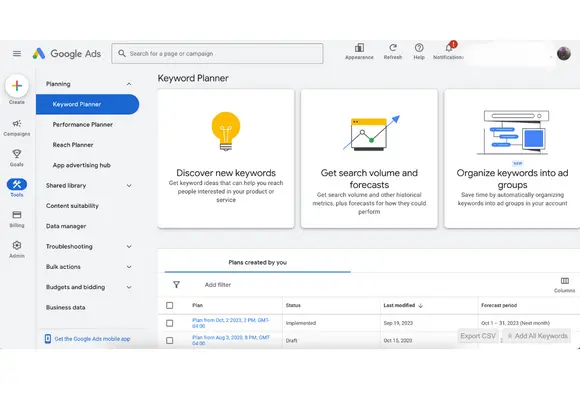
Step 3: Implementing on-page SEO best practices
Effective on-page SEO strategies are vital for maximizing your Shopify store’s visibility. Optimize your product pages with relevant keywords, meta descriptions, and title tags. Utilize schema markup to provide search engines with enhanced context about your products. Enhance user experience by ensuring fast page loading speeds and responsive design. Implement internal linking to guide visitors to important pages on your site.
Optimize your product images with descriptive alt text for improved search engine rankings. These best practices can enhance your on-page SEO efforts and attract organic traffic to your Shopify store.
Step 4: Starting your first link-building campaign
Starting your first link-building campaign is crucial to boost your Shopify store’s SEO. Begin by identifying relevant websites for potential backlinks. Guest posting on blogs within your niche can be effective. Ensure that backlinks come from high-authority sites to enhance your search engine rankings. Utilize social media platforms to share your content and attract more links. Collaborating with influencers or industry partners can also generate quality backlinks. Monitor your progress using SEO tools and adjust your strategy accordingly. Remember, link-building requires patience and consistency to see significant improvements in your organic search traffic. Stay focused on link quality over quantity.
Conclusion
In conclusion, mastering SEO for your Shopify store is crucial for visibility and success. From setting up essential SEO settings to creating engaging content and building quality backlinks, every step plays a vital role in boosting your rankings. Understanding your competition and implementing on-page SEO strategies are key components of a successful Shopify SEO strategy.
Following this step-by-step beginner’s guide, you can optimize your Shopify store effectively and see improved search engine results. Stay consistent, keep evolving with SEO trends, and watch your Shopify store flourish online.
Frequently Asked Questions
How long does it take to see SEO results on Shopify?
Typically, SEO results on Shopify can vary. Initially, improvements may be seen in a few weeks for minor changes, while significant enhancements might take 3-6 months. Continuous optimization is key for sustained growth.
Can I do SEO alone, or should I hire a professional?
Yes, you can do SEO for your Shopify store independently with the right guidance. However, hiring a professional can provide expertise and save time. Assess your skills and resources to make the best decision for your Shopify SEO strategy.
What are the most common Shopify SEO mistakes to avoid?
Falling for quick fixes, neglecting metadata, ignoring mobile optimization, and overlooking site speed are common Shopify SEO mistakes. Lack of keyword research and optimization of product pages also hinder SEO success. Stay vigilant to avoid these pitfalls.



